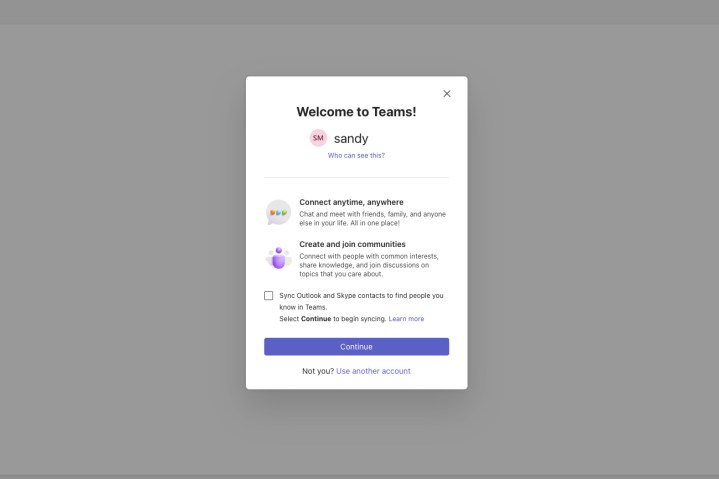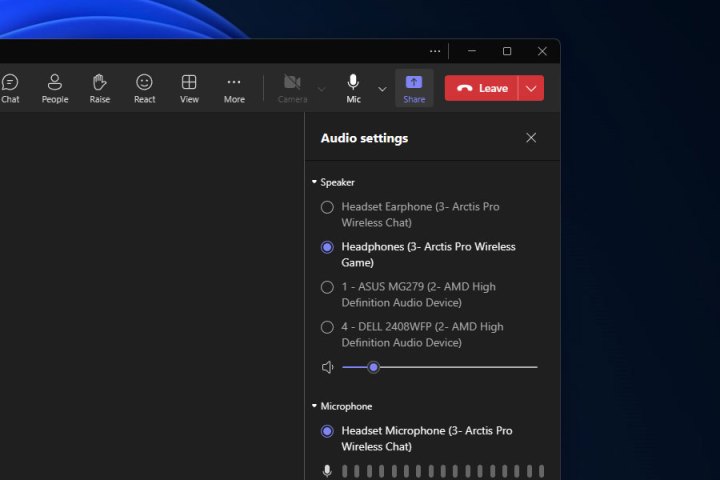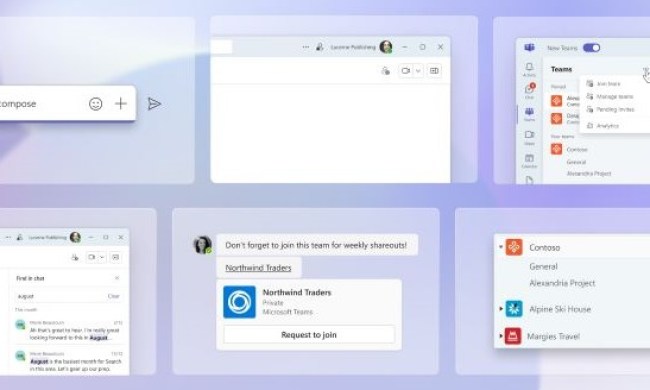Microsoft Teams is one of the most popular team collaboration and communication tools available — we even use Microsoft Teams here at Digital Trends. You can use it in a few different ways, too, including the web service or local desktop application. But which should you use, the desktop app or the web app?
There are some advantages and disadvantages to using Teams either online or on the desktop. Let’s take a look at them to help you decide which is best for you.

Online is easier to access
Teams isn’t an overly complicated tool to use, but the online web app version is arguably easier to access and get started with. You don’t have to install anything — just navigate to the Microsoft Teams site and log in to begin chatting, scheduling, video calling, and (almost) everything else Teams offers.
Conversely, for desktop use you need to download and install Microsoft Teams, which on some managed networks, you may not have permission to do. You’ll also need to have enough local space to install it, although that is negligible by most modern standards. It needs to be updated, too, which can introduce bugs or compatibility issues on occasion. The web app doesn’t require any of that, since it’s automatically updated for you and just runs through your web browser. You can even create a new team in Microsoft Teams online, which is useful.
You’ll need a Microsoft login for each method, and both the browser and the local desktop version can save that information so you don’t need to copy it from your password manager or remember it yourself. However, the desktop app can automatically start with Windows and log you in. Once it is set up, accessing it when you first boot up your PC can be a little quicker.
Desktop works offline
One major advantage of the desktop version of Teams is that it will work (partially) if you lose internet connectivity. You won’t be able to message anyone or use any of the connected, collaborative features without an internet connection, but you will be able to go through your old conversation histories.
Some third-party tools and services can also be accessed offline using the desktop app. There’s more on that below.
Comparatively, the online web app version doesn’t have that functionality, since you can’t login without that internet connection. The only way around that is if you use an app-based version of the web app through a tool like Rambox, but that’s a unique half-and-half solution.
Desktop has pop-out windows
Microsoft has continued to expand its web app features and capabilities over the years, but one feature it still lacks in 2024 is support for pop-out windows. With the desktop version, on the other hand, you can have as many as you like. Video calls in separate windows, additional windows for third-party apps and services, additional chat windows — whatever you like. The web app has to put each of these in a separate tab, which can make viewing them a little less intuitive.
The web app works on anything
Teams is an app that works on just about any hardware, with native versions on Windows, macOS, and Android. But it only officially works on some versions of those operating systems. In contrast, the web app will work on just about anything that can run a web browser. That means Chrome OS, older versions of Windows and macOS that are no longer supported, and various Linux distros.
Desktop has better hardware support

If you only have one audio device and one microphone plugged into your PC, then the web app should function just fine without difficulty. However, if you have a headset that you’d rather use, or a standalone microphone, or a webcam that has its own microphone — it can all get a bit complicated. The desktop version has a more robust settings menu that’s easier to access for making adjustments to the hardware you want to use for your calls and video chats.
Desktop works better with third-party apps
One of Teams’ greatest strengths is how well it works with third-party apps and services. From tools to give admins anonymous feedback from employees to organizational tools like Trello to creating a centralized knowledgebase among your “Team” with a Wiki, Teams can be massively expanded from its base function.
Both the web app and offline desktop application work with a wide range of third-party apps, but the experience is much better on desktop. The apps are already preinstalled and will work right away every time you use them, with no adjustments required. Conversely, the web app doesn’t always support the full integration of certain third-party apps and services due to browser restrictions, and if you’re using it on a different device, it might not have those tools integrated right off the bat.
The desktop app also allows those third-party apps and services to access local data more readily, and they tend to perform better, since they can leverage the power of your local machine, rather than relying on the cloud. There’s also a consistent experience with these additional apps and services on desktop, while the web version can be affected by your browser of choice and what version you’re running.



